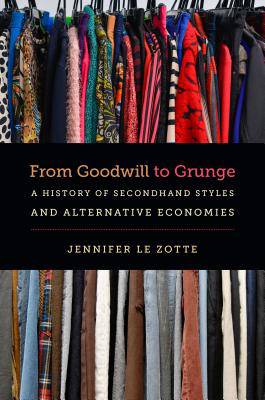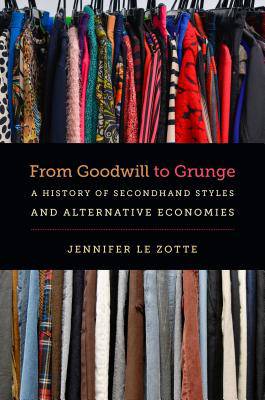
Door een staking bij bpost kan je online bestelling op dit moment iets langer onderweg zijn dan voorzien. Dringend iets nodig? Onze winkels ontvangen jou met open armen!
- Afhalen na 1 uur in een winkel met voorraad
- Gratis thuislevering in België vanaf € 30
- Ruim aanbod met 7 miljoen producten
Door een staking bij bpost kan je online bestelling op dit moment iets langer onderweg zijn dan voorzien. Dringend iets nodig? Onze winkels ontvangen jou met open armen!
- Afhalen na 1 uur in een winkel met voorraad
- Gratis thuislevering in België vanaf € 30
- Ruim aanbod met 7 miljoen producten
Zoeken
€ 129,95
+ 259 punten
Uitvoering
Omschrijving
In this surprising new look at how clothing, style, and commerce came together to change American culture, Jennifer Le Zotte examines how secondhand goods sold at thrift stores, flea markets, and garage sales came to be both profitable and culturally influential. Initially, selling used goods in the United States was seen as a questionable enterprise focused largely on the poor. But as the twentieth century progressed, multimillion-dollar businesses like Goodwill Industries developed, catering not only to the needy but increasingly to well-off customers looking to make a statement. Le Zotte traces the origins and meanings of "secondhand style" and explores how buying pre-owned goods went from a signifier of poverty to a declaration of rebellion.
Considering buyers and sellers from across the political and economic spectrum, Le Zotte shows how conservative and progressive social activists--from religious and business leaders to anti-Vietnam protesters and drag queens--shrewdly used the exchange of secondhand goods for economic and political ends. At the same time, artists and performers, from Marcel Duchamp and Fanny Brice to Janis Joplin and Kurt Cobain, all helped make secondhand style a visual marker for youth in revolt.
Considering buyers and sellers from across the political and economic spectrum, Le Zotte shows how conservative and progressive social activists--from religious and business leaders to anti-Vietnam protesters and drag queens--shrewdly used the exchange of secondhand goods for economic and political ends. At the same time, artists and performers, from Marcel Duchamp and Fanny Brice to Janis Joplin and Kurt Cobain, all helped make secondhand style a visual marker for youth in revolt.
Specificaties
Betrokkenen
- Auteur(s):
- Uitgeverij:
Inhoud
- Aantal bladzijden:
- 342
- Taal:
- Engels
- Reeks:
Eigenschappen
- Productcode (EAN):
- 9781469631899
- Verschijningsdatum:
- 20/03/2017
- Uitvoering:
- Hardcover
- Formaat:
- Genaaid
- Afmetingen:
- 156 mm x 234 mm
- Gewicht:
- 707 g

Alleen bij Standaard Boekhandel
+ 259 punten op je klantenkaart van Standaard Boekhandel
Beoordelingen
We publiceren alleen reviews die voldoen aan de voorwaarden voor reviews. Bekijk onze voorwaarden voor reviews.











